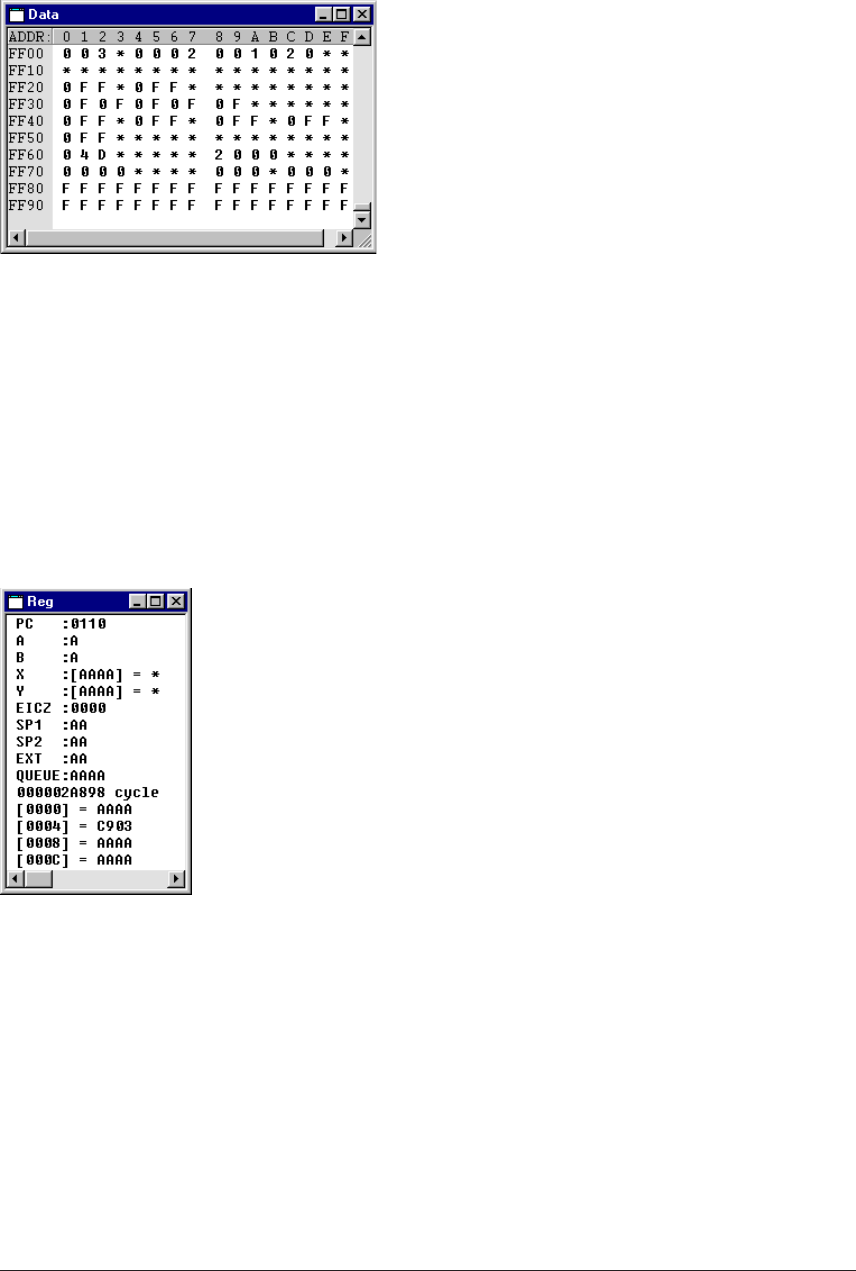
CHAPTER 8: DEBUGGER
S5U1C63000A MANUAL EPSON 129
(S1C63 FAMILY ASSEMBLER PACKAGE)
8.4.4 [Data] Window
(1) Displaying data memory contents
The [Data] window displays the memory dump
results in hexadecimal numbers.
The display area is the entire 64K-word data memory
space (RAM, data ROM, I/O). The contents of all
addresses from 0x0000 to 0xffff can be displayed by
scrolling the window. The contents of unmapped
addresses in each microcomputer model are indicated
by an "∗".
* Updating of display
The display contents of the [Data] window are updated automatically when memory contents are
modified with a command (de, df, or dm command), or by direct modification. After executing the
program (g, gr, s, n, or rst command), the display contents are also updated. To refresh the [Data]
window manually, execute the dd command or click the vertical scroll bar.
(2) Direct modification of data memory contents
The [Data] window allows direct modification of data memory contents. To modify data on the [Data]
window, place the cursor at the front of the data to be modified or double click the data, and then type
a hexadecimal character (0–9, a–f). Data in the address will be modified with the entered number and
the cursor will move to the next address. This allows successive modification of a series of addresses.
8.4.5 [Register] Window
(1) Displaying register contents
The [Register] window displays the contents of the PC, A register, B register,
X register and its memory, Y register and its memory and flags (E, I, C, Z),
stack pointers (SP1, SP2), EXT register, and QUEUE register.
(2) Execution cycle counter
This counter calculates and indicates the number of executed cycles or
execution time since the CPU was reset.
(3) Monitor data
The debugger allows you to specify four addresses in RAM and monitor the
memory contents at these addresses. The [Register] window displays the
contents of these four watch data addresses (4 words each beginning from
the specified address). When the debugger starts up, addresses 0, 4, 8, and
C are initially set as the watch data addresses. The contents are arranged
sequentially from left to right in order of their addresses as they are dis-
played on the screen.
∗
Updating the display
The display is updated when registers are dumped (rd command), when watch data addresses are set
(dw command), when register data is modified (rs command), when the CPU is reset (rst command),
or after program execution (g, gr, s, or n command) is completed.
When the on-the-fly function is enabled, the PC, flag and watch data are updated in real time at 0.5
second intervals while the program is being executed. Other contents are left blank until the program
is stopped by a break.
(4) Direct modification of register contents
The [Register] window allows direct modification of register contents. To modify data on the [Regis-
ter] window, select (highlight) the data to be modified and type a hexadecimal number (0–9, a–f), then
press [Enter]. The register data will be modified with the entered number.


















